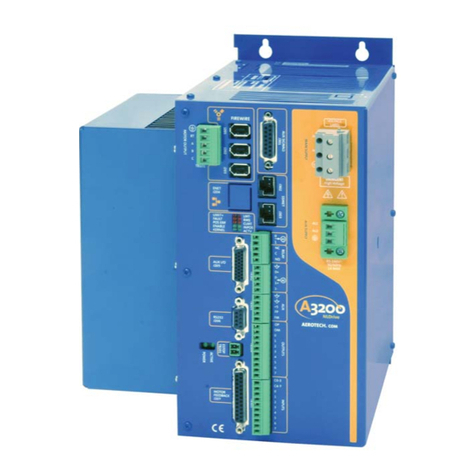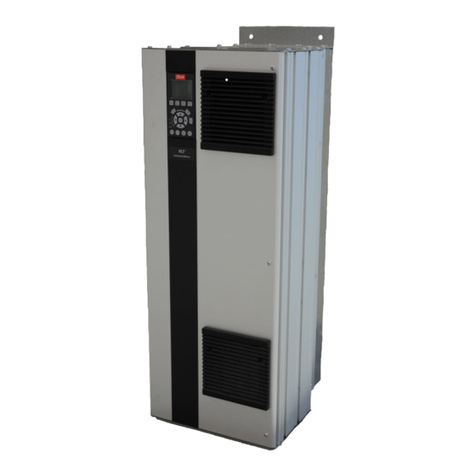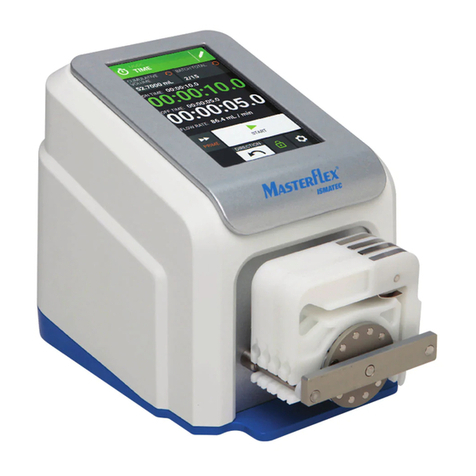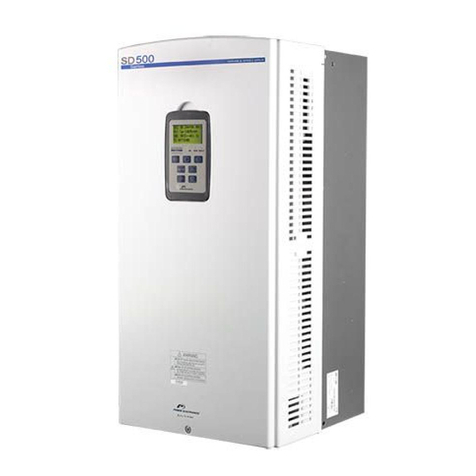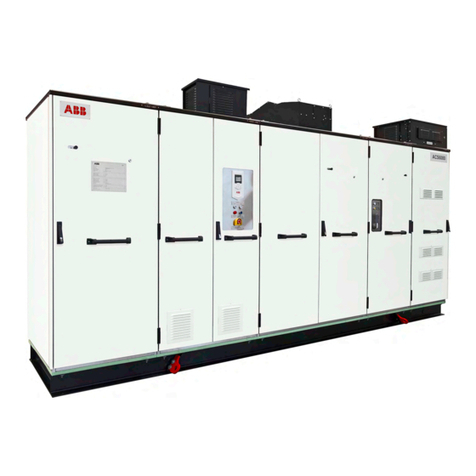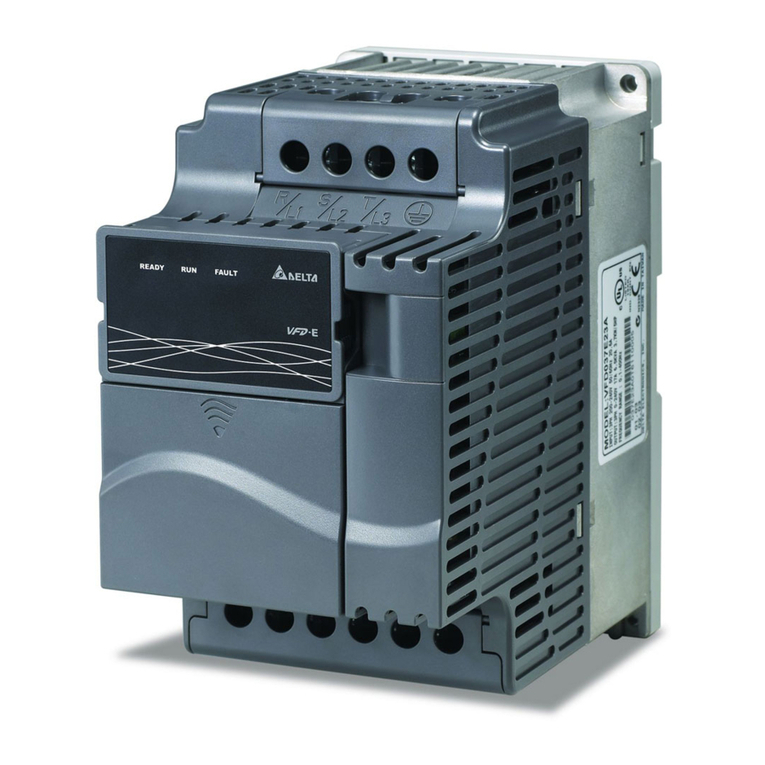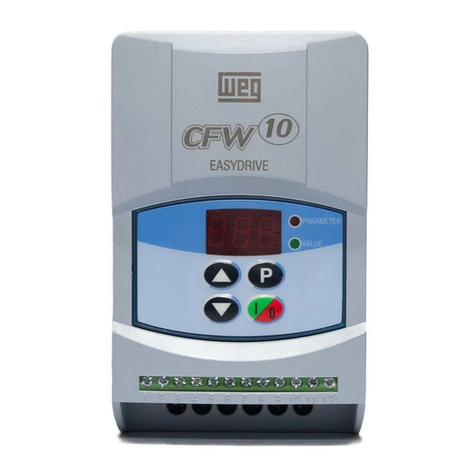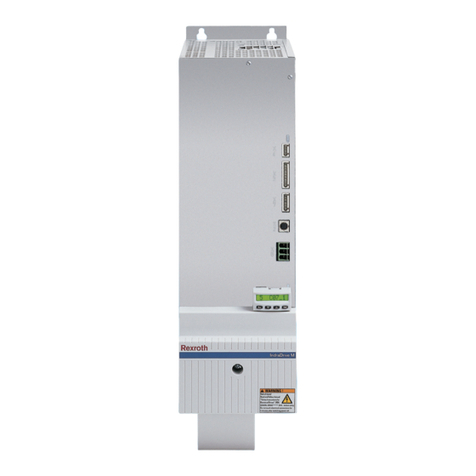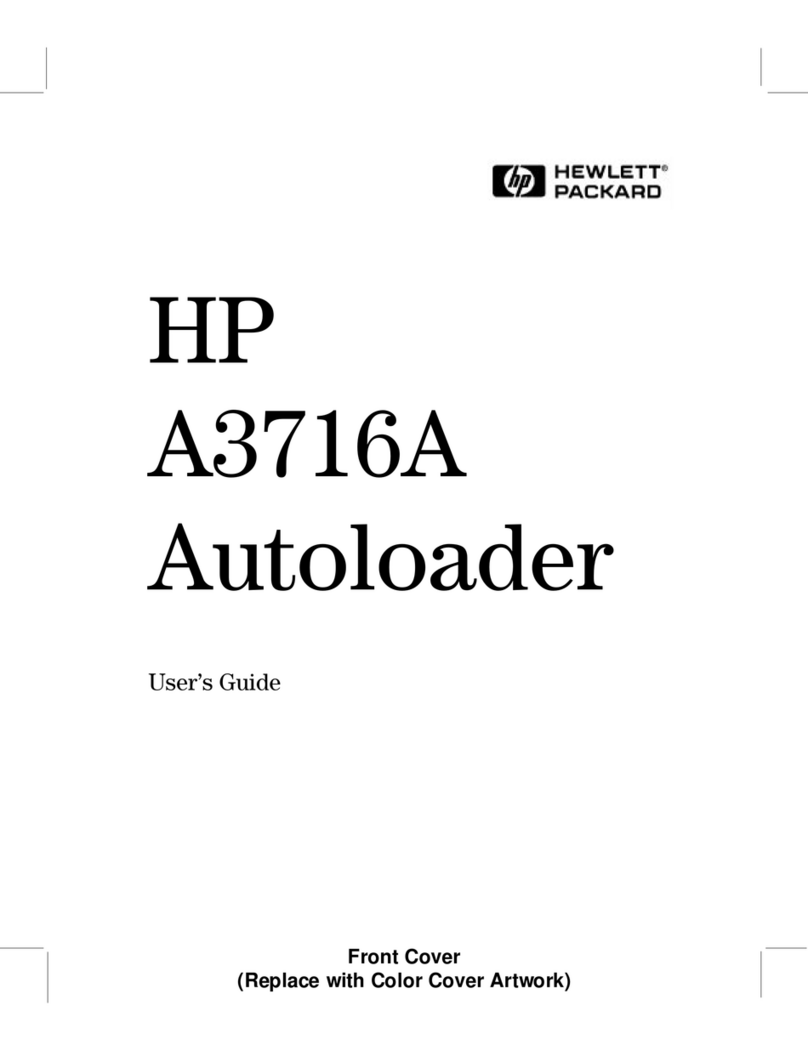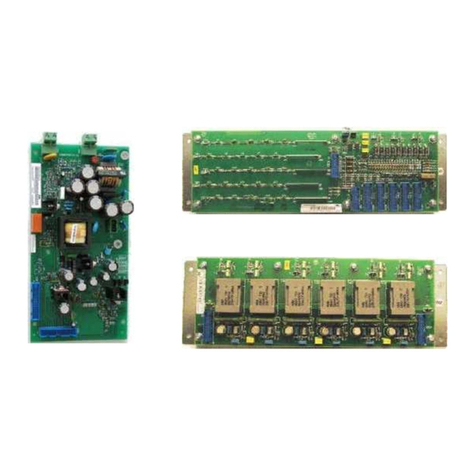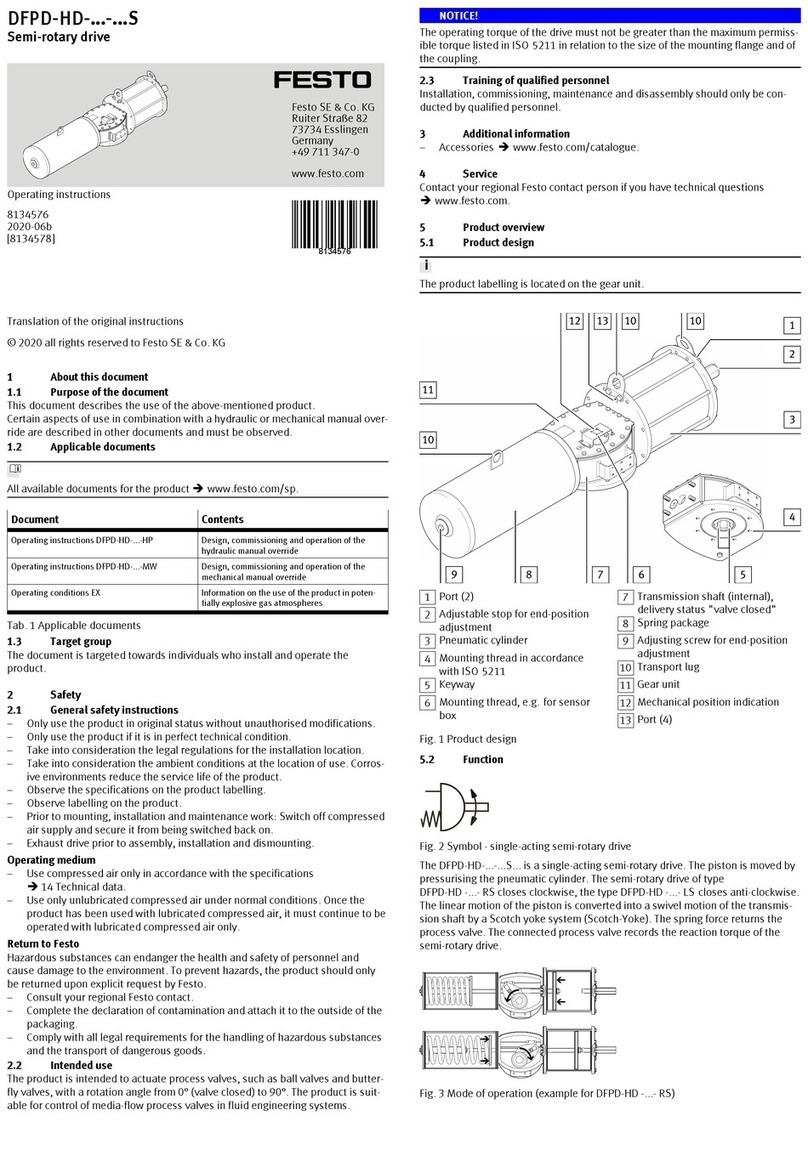BRADEN PCD24B Manual

BRADEN
PCD24B
HYDRAULIC PLANETARY
CAPSTAN DRIVE
INSTALLATION, MAINTENANCE AND SERVICE MANUAL
LIT2152 REV. 2
9-2007
PACR WINCH DIVISION
P.O.BOX 547 BROKEN ARROW, OK U.S.A.74013
PHONE (918) 251-8511 FAX (918) 259-1575
www.paccarwinch.com
PRINTED IN USA
COPYRIGHT 2007 PACCAR WINCH DIVISION
ALL RIGHTS RESERVED


1
TABLE OF CONTENTS
PAGE
FORWORD..................................................................................................................................2
EXPLANATION OF MODEL NUMBER.......................................................................................2
GENERAL SAFETY RECOMMENDATIONS..............................................................................3
THEORY OF OPERATION..........................................................................................................4
DRIVE INSTALLATION ...............................................................................................................5
TYPICAL INSTALLATION DIMENSION DRAWINGS .................................................................6
HYDRAULIC CIRCUITS..............................................................................................................6
PREVENTIVE MAINTENANCE...................................................................................................7
RECOMMENDED PLANETARY GEAR OIL...............................................................................8
UNIT WEIGHTS ..........................................................................................................................8
TROUBLE SHOOTING...................................................................................................9, 12, 13
EXPLODED VIEW DRAWING AND PARTS KEY................................................................10-11
CAPSTAN DRIVE SERVICE.....................................................................................................14
DRIVE DISASSEMBLY .............................................................................................................14
PLANET CARRIER SERVICE ..................................................................................................15
STATIC BRAKE SERVICE........................................................................................................16
CAPSTAN DRIVE ASSEMBLY..................................................................................................17
BOLT TORQUE CHART............................................................................................................20
METRIC CONVERSION TABLE ...............................................................................................21

2
FOREWORD
Read this entire publication and retain it for future reference.
If you have any questions regarding your Braden Capstan Drive or this publication, call the BRADEN Service Department
at 1-918-251-8511, 8:00 am to 4:30 pm Central Time, Monday through Friday.
The minimum service intervals specified are for operating hours of the prime mover.
The following service instructions have been prepared to provide assembly, disassembly and maintenance
information for the BRADEN Model PCD24B Planetary Capstan Drive. It is suggested that before doing any work
on these units, all assembly and disassembly instructions should be read and understood.
Some illustrations in this manual may show details or attachments that are different from your drive. Also, some
components have been removed for illustrative purposes. Illustrations and pictures in this manual are of a
“typical” unit sold through our distribution channels. Some drives, particularly those sold directly to original
equipment manufacturers, may differ slightly in appearance.
Whenever a question arises regarding your BRADEN Drive, please contact the BRADEN Service Department for
the latest available information.
The capstan drive Serial Number and
Model Number are stamped into the
housing at the location shown.
Always refer to these numbers when
requesting information or service
parts.
Model Number
Serial Number
EXPLANATION OF MODEL NUMBER
PCD - 24B - 08 - 071 - 01 - H
PCD Designates Planetary Capstan Drive
24 Designates Maximum Output Torque (24,000 lb-in.)
BDesignates Model Series Relating to Design Changes
08 Designates Overall Gear Ration (7.75:1)
071 Designates Motor Displacement in cu in./rev (071 = 7.1)
01 Designates Output Shaft Configuration (01 = bayonet capstan mounting; 03 = fixed capstan)
HDesignates High Capacity Option

3
GENERAL SAFETY
RECOMMENDATIONS
Safety for operators and ground personnel is of prime
concern. Always take the necessary precautions to
ensure safety to others as well as yourself. To ensure
safety, the prime mover and drive must be operated with
care and concern by the operator for the equipment,
and a thorough knowledge of the machine’s perform-
ance capabilities. The following recommendations are
offered as a general safety guide. Local rules and
regulations will also apply.
1. Read all warning tag information and become
familiar with all controls before operating winch.
2. Never attempt to clean, oil or perform any main-
tenance on a machine with the engine running,
unless instructed to do so in the service manual.
3. Never operate drive controls unless you are prop-
erly positioned at the operators station on the prime
mover and you are sure personnel are clear of the
work area.
4. Assure that personnel who are responsible for hand
signals are clearly visible and that the signals to
be used are thoroughly understood by everyone.
5. Ground personnel should stay in view of the prime
mover operator and clear of capstan. Do not allow
ground personnel near capstan line under tension.
A safe distance of at least 1½ times the length of
the rope should be maintained.
6. On machines having hydraulically, mechanically
and/or cable controlled equipment, be certain the
equipment is either lowered to the ground or
blocked securely before servicing, adjusting and/or
repairing the drive. Always apply the prime mover
parking brakes and lower equipment before
dismounting the prime mover.
7. Inspect rigging, drive and hydraulic hoses at the
beginning of each work shift. Defects should be
corrected immediately.
8. Keep equipment in good operating condition.
Perform scheduled servicing and adjustments
listed in the “Preventive Maintenance” section of
this manual.
9. An equipment warm-up procedure is recommended
for all start-ups and is essential at ambient
temperatures below +40° F (4° C). Refer to
“Warm-up) Procedure” listed in the “Preventive
Maintenance” section of this manual.
10. Be sure of equipment stability before operating drive.
11. The drives described herein are neither designed
nor intended for use or application to equipment
used in the lifting or moving of persons.
12. Do not exceed the maximum pressure (PSI or kPa)
or flow (GPM or LPM) stated in the drive specifi-
cations.
13. Operate capstan line speeds to match job
conditions.
14. Leather gloves should be used when handling rope.
15. Never use rope with broken strands. Replace
rope.
16. Do not weld on any part of the drive.
17. Use recommended hydraulic oil and gear lubricant.
18. Keep hydraulic system clean and free from con-
tamination at all times.
19. Periodically inspect the overall condition of the
capstan, paying particular attention to the sharp
corner of the lock-pocket as shown above. DO NOT
use capstans with a worn lock-pocket or missing
spring.
20. Spool the free end of the rope neatly on the
ground, avoiding the rope becoming tangled around
your feet and/or legs.
21. If the original capstan pin is replaced with a bolt,
it MUST be a grade 8 with a self-locking nut.
22. Load ratings or line pulls of capstan drives are
dependent on the motor used and whether or
not the unit has the high capacity option. Be sure
the load you intend to place on the capstan is
within the rating of your particular unit. Refer to
publication PB-215 for unit ratings.
23. Install guarding to prevent personnel from getting
any part of body or clothing caught at a point where
the rope is wound onto the capstan. Appropriate
guards should be installed around exposed portions
of the capstan shaft.
24. Install switches or valves which will shut off power
to the winch in locations where they can be reached
by anyone entangled in the rope before being drawn
onto the capstan or any “pinch point”.
25. “Deadman” controls, which automatically shut off
power to the capstan drive whenever the operator
leaves his station, should be installed whenever
possible.
Safety Information continued next page.
FAILURE TO OBEY THE FOLLOWING SAFETY
RECOMMENDATIONS MAY RESULT IN
PROPERTY DAMAGE, PERSONAL INJURY OR
DEATH.
SPRING
SHARP CORNER
OF LOCK-POCKET
“GOOD”
SPRING
OR
WORN CORNER
OF LOCK-POCKET
DO NOT USE

4
26. Never allow anyone to stand under a suspended
load.
27. Exposed areas of capstan shafts are dangerous.
Clothing and other items may become tangled and
wrapped around the shaft when rotating.Appropriate
guarding should be installed to prevent any part of
the body or clothing from contacting the shaft
when it is rotating. Failure to provide appropriate
guarding could result in property damage, injury or
death.
WARNING: This emblem is used to warn
against hazards and unsafe practices which
could result in severe personal injury or death
if proper procedures are not followed.
CAUTION: This emblem is used to warn
against potential or unsafe practices which
could result in personal injury or product or
property damage if proper procedures are not
followed.
CAUTION
Safety information callouts used in this manual:
THEORY OF OPERATION
The PCD24B capstan drive is made up of the follow-
ing sub-assemblies and parts:
1. Hydraulic motor and brake valve block with
cartridges.
2. Static brake assembly.
3. Planetary gear set.
4. Output shaft and bearings.
The static brake assembly is a multiple disk pack which
is spring applied, hydraulically released, and equipped
with a solid hub coupling the motor shaft to the plane-
tary sun gear. This means that the static brake is
applied when the drive is stopped, keeping the output
shaft from rotating in either direction. Also, the motor
cannot operate the drive in either direction until the brake
has been released.
In operation, the static brake must be hydraulically
released when the drive is operated in either direction.
When the control valve handle is moved in either direc-
tion, hydraulic pressure is piloted to the brake release
piston and routed to the motor at the same time. Oil
flow out of the motor is initially blocked by one of the
counterbalance cartridges. As hydraulic pressure
increases, the static brake is released. At this time, oil
flow out of the motor is still blocked. As pressure con-
tinues to increase, the cartridge is piloted open and the
motor is allowed to turn. This sequence ensures the static
brake is completely released before any rotation occurs,
resulting in minimal wear of the friction disks in the brake
assembly. The extent to which the cartridge opens will
determine the amount of oil that can flow through it and
the speed of the output shaft. Increasing the flow of oil
to the drive will cause the pressure to rise and the open-
ing in the cartridge to enlarge, allowing more oil to flow
and increasing the speed of the output shaft. Decreasing
this flow causes the pressure to lower, decreasing the
opening in the cartridge and slowing down the output
shaft. When the control valve is returned to center and
oil flow is stopped, motor rotation stops and the static
brake is fully applied by the brake springs.
Disc brake (static parking
brake) releases at approx.
390 psi (2,690 kPa) at no
load.
Dual cartridge counter-
balance valve opens at
aprox. 960 psi (6,620 kPa) at
15 gmp (57 Lpm).
Dual cartridge counter-
balance valve opens at
approx. 1,580 psi (10,890
kPa) at 30 gpm (114 Lpm).
NOTE: Pressures shown
above are ΔP across the
motor.

5
The PCD24B capstan drive should normally be mounted
with the centerline of the output shaft in a horizontal posi-
tion. The drive may be rotated to any position around
this centerline. There are four
3
/
8
NPT plugs in the drive
housing, 90 degrees apart. When the mounting posi-
tion of the drive is determined, the highest of these plugs
should be removed and replaced with the reducer
bushing and vent plug, which are shipped with the drive.
The drive is shipped with oil, so be sure the plug you
remove is above the horizontal centerline to avoid oil
loss.
The drive housing has six (6) through drilled holes for
5
/
8
in. capscrews and four (4) holes drilled and tapped
to ¾ - 10 that can be used for mounting. The drive can
be either flange mounted using the four holes in the face
of the housing, or surface mounted using the four tapped
holes. A minimum of four (4) grade 5 or better fasten-
ers should be used.
Both motor ports on all drives are SAE -10 ORB, and
are located in the brake valve block. The shift port on
two speed motors is SAE -4 ORB, also in the valve block.
Two speed motors normally operate in low speed, and
are shifted to high speed by applying a minimum of 100
PSI to the shift port. Shift pressure MUST be 100 PSI
greater then the return line back pressure, and can be
as high as system pressure. The shift port is shown as
port “X” in the hydraulic circuit drawing that follows.
The hydraulic lines and components that operate the
drive should be of sufficient size to assure minimum back
pressure at the motor. Back pressure at the motor must
not exceed 100 PSI (690 kPa) to maintain optimum motor
seal life and assure complete brake application.
The directional control valve must be a three position
four way valve with a motor spool such that when the
valve is in the center position both work ports are open
to tank (open center, open port).
To install the bayonet type capstan, push the capstan
onto the extension shaft, against spring tension, then
turn counter-clockwise (viewed from the outside) to the
stop. Release the capstan and verify that the spring has
pushed the capstan outward into the lock position. A
cutaway drawing of the capstan is shown in the “General
Safety Recommendations” earlier in this manual.
High quality hydraulic oil is essential for satisfactory per-
formance and long hydraulic system component life. Oil
having 150 to 330 SUS viscosity at 100° F (38° C) and
viscosity index of 100 or greater will give good results
under normal temperature conditions. The use of an oil
having a high viscosity index will minimize cold start trou-
ble and reduce the length of warm-up periods. A high
viscosity index will minimize changes in viscosity with
corresponding changes in temperature.
Maximum cold weather start-up viscosity should not
exceed 5,000 SUS with a pour point at least 20° F
(11° C) lower than the minimum ambient temperature.
Under continuous operating conditions the temperature
of the oil at any point in the system must not exceed
180° F (82° C).
120° F (49° C) to 140° F (60° C) is generally consid-
ered optimum.
In general terms:
For continuous operation at ambient temperatures
between 50° F (10° C) and 110° F (43° C), use
SAE 20W
For continuous operation between 10° F (-12° C)
and 90° F (32° C), use 10W
For applications colder than 10° F (-12° C), con-
tact the Braden Service Department.
The use of multi-viscosity oils is generally not rec-
ommended.
The hydraulic oil filter should have a 10 micron nomi-
nal rating and be full flow type.
DRIVE INSTALLATION

6
TYPICAL INSTALLATION DIMENSION DRAWINGS
Mounting dimensions for all units are the same. Drive shown below has the 088 motor option. Consult publication
PB-215 for other motor dimensions and performance data.
HYDRAULIC CIRCUITS
Dimension A
Standard Unit 4.75 in. diam.
High Capacity Option 6.00 in. diam.
DRIVE CONTROL CIRCUIT
SINGLE SPEED MOTOR
DRIVE CONTROL CIRCUIT
2-SPEED MOTOR
DRIVE
BRAKE
DRIVE
BRAKE
MANUAL
SOLENOID

7
PREVENTIVE
MAINTENANCE
A regular program of preventive maintenance for your
planetary capstan drive is strongly recommended to min-
imize the need for emergency servicing and promote
safe, reliable operation.
Field experience supported by engineering tests, indi-
cates the two service procedures listed below are the
MOST critical to safe, reliable operation and must be
observed.
Regular Gear Oil Changes −every 1,000 hours or six
(6) months.
Use of Proper Gear Oil −recommended type for pre-
vailing ambient temperature.
The following minimum service intervals are specified
for operating hours of the prime mover.
1. Oil Level
The gear oil level should be checked every 500
hours of operation or three (3) months, whichever
occurs first, or whenever there is any sign of oil
leakage. Oil level should be even with the center-
line of output shaft. Typically, one of the four plugs
in the housing will be on the drive centerline and
can be used to check oil level. The oil level should
be even with the bottom of the plug opening. If addi-
tional oil is needed, refer to “Recommended Gear
Oil”.
2. Oil Change
The gear oil should be changed after the first one
hundred (100) hours of operation, then every 1,000
operating hours or six (6) months, whichever
occurs first. The gear oil must be changed to remove
wear particles that impede the safe and reliable
operation of the brake and erode bearings, gears
and seals. Failure to change gear oil at these sug-
gested minimum intervals may contribute to inter-
mittent brake slippage which could result in property
damage, severe personal injury or death.
Remove the drain plug from the housing and drain
the oil into a suitable container. Capacity of the unit
is 2 pints (0.95 L). Remove the vent plug from the
housing. It is very important to keep this vent clean
and unobstructed. Clean the vent in solvent, be sure
it is not plugged, and re-install it in the drive. Do
not paint over the vent or replace it with a solid plug.
3. Hydraulic System
The original filter element should be replaced
after the first fifty (50) hours of operation, then every
500 operating hours or three (3) months, or in
accordance with the equipment manufacturer’s
recommendations.
4. Mounting Bolts
Tighten all capstan drive mounting bolts to recom-
mended torque after the first one hundred (100)
hours of operation, then every 1,000 operating hours
or six (6) months, whichever occurs first.
5. Warm-up Procedure
A warm-up procedure is recommended at each
start-up and is essential at ambient temperatures
below 40° F (4° C).
The prime mover should be run at its lowest
recommended RPM with the capstan drive control
lever in neutral allowing sufficient time to warm up
the hydraulic system. The drive should be oper-
ated at low speeds, forward and reverse, several
times to prime all lines with warm hydraulic oil, and
to circulate gear lubricant through the planetary
gears and bearings.
The brake valve cartridges are factory set and normally require no further adjustment. The brake valve
can be manually piloted open by its adjusting screw. Manually opening brake valve could cause inter-
nal drive damage and may cause loss of load control during lowering operations which may result in
property damage, severe injury or death.
The brake valve cartridges may be unique in that turning the adjustment screw in, clockwise, lowers
the brake release pressure. In the event it has been determined a brake valve adjustment is required
the entire brake valve cartridge should be replaced.
The brake valve cartridge is easily removed from the brake valve block for cleaning, inspection or
replacement, but is not designed to be disassembled in the field. In the event it has been determined
the brake valve should be disassembled, the entire brake valve cartridge should be replaced.

8
RECOMMENDED PLANETARY GEAR OIL
Field experience, supported by engineering endurance tests, indicates the use of the proper gear oil and a
program of regular preventive maintenance will help provide extended gear train life and reliable winch brake
performance. For this reason, BRADEN has published the following specifications to assist in determining which
lubricant is best suited to your application.
Failure to properly warm up the capstan drive, particularly under low ambient temperature conditions,
may result in temporary brake slippage due to high back pressures attempting to release the brake,
which could result in property damage, severe personal injury or death.
Failure to use the proper type and viscosity of planetary gear oil may contribute to intermittent brake
clutch slippage which could result in property damage, severe personal injury or death. Some gear
lubricants contain large amounts of EP (extreme pressure) and anti-friction additives which may con-
tribute to brake clutch slippage or damage to brake friction discs or seals. Oil
viscosity with regard to ambient temperature is also critical to reliable brake clutch operation. Our
tests indicate that excessively heavy or thick gear oil may contribute to intermittent brake clutch slip-
page. Make certain that the gear oil viscosity used in your winch is correct for your prevailing
ambient temperature.
PREVAILING AMBIENT TEMPERATURE
o
F -40 -30 -20 -10 0 10 20 30 40 50 60 70 80 90 100 110 120 130
o
F
AGMA 5 EP, ISO VG 220
AGMA 4 EP, ISO VG 150
MOBILGEAR SHC 150
SYNTHETIC OR EQUIVALENT
o
C -40 -30 -20 -10 0 10 20 30 40 50
o
C
NOTE: SHADED TEMPERATURE RANGE IN THE CHART ABOVE NOT RECOMMENDED FOR SEVERE APPLICATIONS SUCH AS: OFFSHORE
CRANES, SUSTAINED FAST DUTY CYCLES OR FREQUENT LIFTING.
i
TexacoShell
Meropa 150
Meropa 220
Omala 150
Omala 220
Chevron
Gear Compounds EP 150
Gear Compounds EP 220
PREVAILING AMBIENT TEMPERATURE
o
F -40 -30 -20 -10 0 10 20 30 40 50 60 70 80 90 100 110 120 130
o
F
AGMA 5 EP, ISO VG 220
AGMA 4 EP, ISO VG 150
SYNTHETIC OR EQUIVALENT
o
C -40 -30 -20 -10 0 10 20 30 40 50
o
C
NOTE: SHADED TEMPERATURE RANGE IN THE CHART ABOVE NOT RECOMMENDED FOR SEVERE APPLICATIONS SUCH AS: OFFSHORE
CRANES, SUSTAINED FAST DUTY CYCLES OR FREQUENT LIFTING.
i
TexacoShell
Meropa 150
Meropa 220
Omala 150
Omala 220
Chevron
Gear Compounds EP 150
Gear Compounds EP 220
TexacoMobil Shell
Meropa 150
Meropa 220
Omala 150
Omala 220
Chevron
Gear Compounds EP 150
Gear Compounds EP 220
MOBILGEAR 600 XP 150 OR EQUIVALENT
MOBILGEAR 600 XP 150 OR EQUIVALENT
Mobilgear 600 XP 150
Mobilgear 600 XP 220
Planetary hoists are factory filled with Mobilgear 600 XP 150, or equivalent. Consult your oil supplier for other equivalent
oils if required.
Unless otherwise specified, it is recommended that the gear oil be changed after the first one hundred (100) hours
or thirty (30) days of machine operation, then every one thousand (1,000) hours or twelve (12) months, whichever
occurs first. The gear oil should also be changed whenever the ambient temperature changes dignificantly and an
oil from a different temperature range would be more appropriate.
UNIT WEIGHTS
Drive Configuration . . . . . . . . . Weight (lbs) Weight (kg)
049 motor . . . . . . . . . . . . . 152 69
071 motor . . . . . . . . . . . . . 152 69
080 motor . . . . . . . . . . . . . 154 70
Drive Configuration . . . . . . . . . Weight (lbs) Weight (kg)
088 motor . . . . . . . . . . . . . 146 66
088 motor (fixed capstan) . 195 88
119 motor . . . . . . . . . . . . . 158 72
129 motor . . . . . . . . . . . . . 154 70
072/036 (2 speed motor) . 170 77

9
TROUBLE SHOOTING
TROUBLE A:
CAPSTAN DRIVE WILL NOT PULL MAXIMUM LOAD.
PROBABLE CAUSE REMEDY
1. System relief valve may be set too low Install a pressure gauge in the haul-in port and apply
a stall pull on the capstan. If pressure is low, increase
relief valve setting until recommended pressure is
obtained.
NOTE: If pressure does not increase in proportion to
adjustment, relief valve may be contaminated or worn
out. In either case, the relief valve may require disas-
sembly or replacement.
2. If this trouble occurs suddenly after working at max-
imum pull, a particle of dirt may be lodged under
the system relief valve, holding it partially open. If
this is the cause, a considerable loss in line speed
may be noticed as the load on the rope is increased.
Remove relief valve, disassemble and clean parts thor-
oughly in a suitable solvent. Reassemble and install relief
valve. Reset pressure according to specifications.
3. If the pump is belt driven, the belts may be
slipping. Check belts when pump is at full PSI (kPa) (stall pull
on capstan). Tighten belts if they are found to be
slipping.
4. The oil level in the reservoir may be too low. The
suction line may be restricted or have an air leak
causing cavitation at the inlet port. This will cause
the pump to make a whining noise.
Check oil level in the reservoir. Check the suction line
for damage, externally and internally. Replace suction
line if necessary.
5. The drive may be mounted on an uneven or flex-
ible surface which causes distortion of the base and
binding of the gear train. Binding in the gear train
will absorb horsepower needed to generate the
rated line pull and cause heat.
Reinforce mounting surface.
If necessary, use steel shim stock to level the drive.
First loosen, then evenly retighten all drive mounting bolts
to recommended torque.
6. Be certain hydraulic system temperature is not more
than 180° F (82° C).
Excessive hydraulic oil temperatures increase
motor internal leakage and reduce motor perform-
ance.
Same as remedy for A-5.
same as remedy for B-4.
7. After all the causes listed above have been inves-
tigated and it is found that the drive will stall at max-
imum pressure without developing the maximum
pull on the capstan, the trouble may be in the drive.
Install a pressure gauge in the motor haul-in port and
apply a stall pull on the capstan. If the pressure is up
to maximum and the line pull is less than the specified
line pull, the trouble will be in the drive.
Disassemble drive according to disassembly instructions
and check that gear train turns freely. If gear train is
found to be satisfactory, inspect the hydraulic motor,
according to the service instructions for the hydraulic
motor.

10
10
44
43
35
42 37
44
34
26
27
28
30
45
46
24
24
36
29
25
23 22
33 32
31
3
11
2
41
39
38
12
89
765
16 15 14 17 19 17 16
18
40
13
20
21
1
50
53
4
54
52 51
55

11
PCD24B
PARTS
KEY
ITEM DESCRIPTION QTY.
1 HOUSING 1
2BRAKE CYLINDER 1
3MOTOR SUPPORT 1
4 OUTPUT SHAFT 1
5 SEAL 1
6TAPERED BEARING CONE 1
7TAPERED BEARING CUP 1
8TAPERED BEARING CONE 1
9TAPERED BEARING CUP 1
10 O-RING OR GASKET
(depending on motor option)
1
11 O-RING 1
12 SPLIT RING 1
13 PLANET CARRIER 1
14 PLANET GEAR 3
15 PLANET GEAR SHAFT 3
16 THRUST RACE 6
17 ROLLER BEARING 6
18 ROLLPIN 3
19 BEARING SPACER 3
20 SUN GEAR 1
21 THRUST WASHER 1
22 SPRING 12
23 PRESSURE PLATE 1
24 SPACER PLATE 2
25 BRAKE PISTON 1
26 BRAKE PISTON SEAL 1
27 FRICTION DISC 7
28 STEEL DISC 8
29 O-RING 1
30 BACKUP RING 1
31 BRAKE COUPLING 1
32 LOCKWASHER 4
33 CAPSCREW (HEX HEAD) 4
34 O-RING 2
35 MOTOR 1
36 BRAKE VALVE BLOCK 1
37 CAPSCREW 4
38 REDUCER BUSHING 1
39 VENT PLUG 1
40 PIPE PLUG 4
41 CAPSCREW (SOCKET HEAD) 6
42 COUNTERBALANCE VALVE CARTRIDGE 2
43 HOSE ASSEMBLY 1
44 ELBOW FITTING 1
45 CAPSCREW 2
46 LOCKWASHER 2
47 ELBOW FITTING 1
50 CAPSTAN PIN (not used with fixed capstan) 1
51 CAPSCREW (HEX HEAD - fixed capstan ONLY) 1
52 LOCKWASHER (fixed capstan ONLY) 1
53 WASHER (fixed capstan ONLY) 1
54 CAPSTAN (fixed capstan ONLY) 1
55 KEY (fixed capstan ONLY) 1
For part numbers, refer to PCD-24B Material List,
Publication Number PB-244.

12
Trouble Shooting Continued TROUBLE B:
CONSIDERABLE REDUCTION IN LINE SPEED.
PROBABLE CAUSE REMEDY
1. Same as A-2. Same as remedy for A-2.
2. Same as A-4. Same as remedy for A-4.
3. Same as A-6. Same as remedy for A-5 and B-4.
4. If this trouble has increased gradually, the hydraulic
pump or drive motor may be worn. Remove and inspect pump. If satisfactory, consult the
disassembly instructions for the drive and remove and
inspect the motor according to the service instructions
for the hydraulic motor.
TROUBLE C:
BRAKE WILL NOT HOLD WHEN CONTROL VALVE IS RETURNED TO NEUTRAL
AFTER LIFTING A LOAD.
PROBABLE CAUSE REMEDY
1. Excessive system back pressure acting on the brake
release port. Install a pressure gauge at the “pay-out” port of the
hydraulic motor. Operate the pump at full throttle and
monitor pressure in “neutral” and haul-in positions. If the
pressure is greater than 50 PSI, check for restrictions
in the return line from the winch to the control valve and
the control valve to the reservoir.
TROUBLE D:
THE CAPSTAN WILL NOT LOWER THE LOAD OR
NOT LOWER THE LOAD SMOOTHLY.
PROBABLE CAUSE REMEDY
1. The friction brake may not be releasing as a result
of a defective brake cylinder seal.
NOTE: If the brake cylinder seal is defective you
will usually notice oil leaking from the drive vent
plug.
Disassemble and inspect the brake cylinder seal.
3. Same as B-4. Same as remedy for B-4.
3. Same as A-3. Same as remedy for A-3.
4. Same as A-5. Same as remedy for A-5.
2. Friction brake will not hold due to worn or dam-
aged brake disks. Disassemble drive to inspect/replace worn parts.
2. Friction brake will not release as a result of
damaged brake disks. Disassemble brake to inspect brake disks.

13
TROUBLE D continued:
THE CAPSTAN WILL NOT LOWER THE LOAD OR
NOT LOWER THE LOAD SMOOTHLY.
PROBABLE CAUSE REMEDY
6. Control valve handle being operated too quickly. Operate control valve smoothly when starting and
stopping a load. Conduct operator training as required.
7. Insufficient gear oil in drive. Remove oil level plug and check oil level. Fill to proper
level.
8. Control valve does not have good metering
characteristics. See “Drive Installation” section for control valve
specifications.
TROUBLE E:
THE DRIVE RUNS HOT.
PROBABLE CAUSE REMEDY
2. Be certain that the hydraulic system temperature
is not more than 180° F (82° C). Excessive hydraulic
oil temperatures may be caused by:
A. Plugged heat exchanger.
B. Too low or too high oil level in hydraulic
reservoir.
C. Same as A-1.
D. Hydraulic pump not operating efficiently.
Thoroughly clean exterior and flush interior.
Fill/drain to proper level.
Same as remedy for A-1.
Remove and inspect pump.
Check suction line for damage. If pump is belt driven,
belts may be slipping. Replace/tighten belts.
TROUBLE F:
DRIVE “CHATTERS” WHILE RAISING RATED LOAD.
PROBABLE CAUSE REMEDY
1. Same as A-1. Same as remedy for A-1.
2. Same as B-4. Same as remedy for B-4.
3. Excessively worn or damaged internal drive parts. Disassemble drive to inspect/replace worn parts.
2. Same as D-7. Same as remedy for D-7.
3. Hydraulic oil flow to motor may be too low. Increase pump rpm.
4. Same as D-6. Same as remedy for D-6.
1. Same as A-5. Same as remedy for A-5.

14
CAPSTAN DRIVE SERVICE
Foreword to Drive Service
Before any part is removed from the capstan drive, all
service instructions should be read and understood.
Work in a clean, dust free area as cleanliness is of utmost
importance when servicing hydraulic equipment.
Inspect all replacement parts prior to installation to detect
any damage which might have occurred in shipment.
Use only genuine BRADEN replacement parts for opti-
mum results. Never reuse expendable parts such as oil
seals and O-rings.
Inspect all machined surfaces for excessive wear or dam-
age before beginning to reassemble the drive.
Lubricate all O-rings and oil seals with gear oil prior to
installation.
Use a non-hardening sealing compound on the outside
surface of oil seals and a light coat of thread sealing
compound on pipe threads. Avoid getting thread com-
pound inside parts or passages that conduct oil.
Thoroughly clean all parts in a good grade of non-flam-
mable safety solvent. Wear protective clothing as
required.
Refer to exploded view drawing in the center of this man-
ual for item numbers used in service procedures.
DRIVE DISASSEMBLY
1. Disconnect and remove the hose (item 43) between
the brake valve block and the brake cylinder. Remove
the two capscrews holding the motor to the motor sup-
port and remove the motor. Remove and discard the
motor pilot O-ring. Remove one of the oil drain plugs
(item 40) and drain the gear oil into a suitable container.
2. The four capscrews holding the motor support to the
brake cylinder should be evenly removed in 1 or 2 turn
increments since the motor adapter is under spring
tension. Mark the relative position of the motor support
to the brake cylinder. This will assure the motor will be
correctly positioned when the unit is re-assembled.
3. Remove the motor support, complete static brake
assembly, brake coupling (item 31) and all other parts
inside the brake cylinder (item 2). Remove and discard
the O-ring and backup ring (items 29 & 30) and the brake
piston seal (item 26).
4. Remove the six (6) capscrews holding the brake cylin-
der to the main housing (item 1). Mark the relative posi-
tion of the brake cylinder to the main housing. This will
assure the brake release port will be correctly positioned
when the unit is re-assembled.
DO NOT CLEAN BRAKE FRICTION DISCS
IN SOLVENT. SOLVENT MAY CAUSE DAMAGE
TO FRICTION MATERIAL WHICH MAY RESULT
IN BRAKE FAILURE AND LOSS OF LOAD
CONTROL.

15
5. Separate the brake cylinder from the main housing
and remove and discard the O-ring from the brake
cylinder.
6. Remove the sun gear (item 20) and the planetary
carrier assembly. Keep the thrust washer (item 21) with
the planetary carrier for inspection when the gear set
is serviced.
7. Separate and remove the two halves of the split ring
(item 12). Support the main housing as shown above
and press out the output shaft (item 4).The two tapered
roller bearing cups and cones (items 6, 7, 8, & 9) can
now be removed from the housing and output shaft.
Remove the seal (item 5) from the main housing.
Remove the vent plug (item 39) from the housing, clean
in solvent and reinstall. DO NOT paint over the vent or
replace it with a solid plug. If one of the oil drain plugs
was removed, clean the plug and hole, apply a light coat
of thread sealing compound to the plug and re-install it
into the housing. Thoroughly clean and inspect the hous-
ing for damage. Check the ring gear teeth (machined
into the inside of the housing) for nicks, spalling or exces-
sive wear. Replace the housing if gear tooth wear is
greater than 0.015 in. (0.4 mm) when compared to
unworn area of teeth.
This completes disassembly of the capstan drive.
PLANET CARRIER
SERVICE
Disassembly
1. Each planet gear is removed by first driving the rollpin
(item 18) into the planet gear shaft (item 15).The planet
gear shaft can then be pushed through the planet car-
rier (item 13). Drive the rollpin out of the shaft and dis-
card. Remove the planet gear (item 14) and two thrust
races (item 16). The two roller bearings (item 17) and
bearing spacer (item 19) are then removed from the
planet gear.
Repeat this procedure for each of the other two gears.
Thoroughly clean all parts and inspect for damage and
wear. The bearing rollers should not exhibit any irreg-
ularities. If the rollers show any sign of spalling, corro-
sion, discoloration, material displacement or abnormal
wear, the bearing should be replaced. Likewise, the cage
should be inspected for unusual wear or deformation,
particularly the cage bars. If there is any damage that
will impair the cage’s ability to separate, retain and guide
the rollers properly, the bearing should be replaced. The
thrust washer contact areas should be free from any
surface irregularities that may cause abrasions or fric-
tion. The gears and shafts should be inspected for abnor-
mal wear or pitting and replaced if necessary.

STATIC BRAKE SERVICE
1. Remove all friction and steel discs (items 27 & 28)
and both spacer plates (item 24) from the motor adapter.
1. Thoroughly clean and inspect all parts at this time.
Check brake piston sealing surfaces on motor adapter
and brake cylinder (item 2) for damage or excessive
wear. Be sure the brake release port in the brake cylin-
der is open and free of contamination.
2. Place each friction disc on a flat surface and check
for distortion with a straight edge. Friction material should
appear even across entire surface with groove pattern
visible. Replace friction disc if splines are worn to a point,
disc is distorted, friction material is worn unevenly, groove
pattern is worn away or friction material is burned. Place
each steel disc on a flat surface and check for distor-
tion with a straight edge. Check surface for signs of mate-
rial transfer or heat. Replace steel disc if splines are
worn to a point, disc is distorted or heat discolored.
16
Assembly
1. Insert two bearings with a spacer between them into
a planet gear. Place a thrust race on each side of the
gear and position this assembly in the planet carrier.
Slide the planet gear shaft through the carrier and gear
assembly, aligning the pin hole in the shaft with the hole
in the carrier.
2. Drive a NEW rollpin into place. Always use NEW
rollpins. When properly positioned, 50% of the rollpin
length should be engaged in the planet gear shaft with
the remaining 50% in the carrier.
3. With a center punch, stake the carrier next to the pin
hole. This will distort the hole in the carrier so the rollpin
will not back out when in service. Repeat steps 1 through
3 for each of the other two gears.
DO NOT CLEAN BRAKE FRICTION DISCS
IN SOLVENT. SOLVENT MAY CAUSE
DAMAGE TO FRICTION MATERIAL WHICH
MAY RESULT IN BRAKE FAILURE AND
LOSS OF LOAD CONTROL.

17
3. Check free length of each brake spring. Minimum free
length is 15/16 inch (23.8 mm). Check springs for any
signs of cracking or failure. If a brake spring must be
replaced for any reason, then ALL brake springs must
be replaced.
4. Place the motor support on workbench with the motor
mounting surface down and install one spacer plate (item
24). Insert a steel disc (item 28) against the spacer plate,
followed by a friction disc (item 27). Alternately install
steel and friction discs until seven (7) friction discs and
eight (8) steel discs have installed, finishing with a steel
disc. Install the second spacer plate (item 24) on top
of the last steel disc.
NOTE: It is a good practice to lubricate the discs with
gear oil prior to installation.
5. Install backup ring (item 30) onto the motor support
with the flat side down. Install O-ring (item 29) onto the
motor support. The O-ring will fit into the groove in the
backup ring.
6. Lightly lubricate the brake piston seal with hydraulic
oil and install the seal onto the motor support. The seal
MUST be installed with the wide end down, toward the
O-ring installed in the last step.
CAPSTAN DRIVE
ASSEMBLY
1. If any of the oil drain plugs or vent was previously
removed, install them into the main housing using a non-
hardening thread sealing compound. Press bearing cups
(items 7 & 9) into the housing. Install the larger bear-
ing cone (item 6) into the cup (item 7). Apply a non-
hardening sealant on the outside diameter of the seal
(item 5) and press it into the housing (item 1) with the
spring side toward the bearing, using a flat plate to avoid
distortion. Lightly lubricate the sealing and bearing sur-
faces of the output shaft and insert the shaft into the
housing from the output end, being careful not to dam-
age the seal. Install the smaller bearing cone (item 8)
onto the output shaft through the inside of the housing.
FAILURE TO REPLACE BRAKE SPRINGS AS
A SET MAY RESULT IN UNEVEN BRAKE APPLI-
CATION PRESSURE AND REPEATED BRAKE
SPRING FAILURE.
CAUTION

18
2. Install both halves of the split ring (item 12) around
the output shaft and pry firmly into place against the
shaft. At this point, the output shaft should rotate
smoothly and freely in the housing.
3. Install the planetary gear assembly into the housing.
Rotate the planet gears to engage the ring gear and
rotate the planet carrier, or the output shaft, to engage
the splines on the planet carrier with those on the out-
put shaft.The planet carrier MUST fully engage the out-
put shaft and go over the split ring, holding it in place.
At this point, the planet carrier will be slightly below the
end of the housing. If the planet carrier will not fully drop
into the housing, the split ring may not be fully seated
against the output shaft. DO NOT proceed to the next
step until the planet carrier is properly positioned.
4. Lightly coat the surface of thrust washer (item 21)
with an oil soluble grease and position it on the planet
carrier. Install the sun gear into the center of the planet
gear assembly.
5. Install a new O-ring (item 11) onto the brake cylin-
der (item 2). Install the brake cylinder onto the main hous-
ing, being careful that the thrust washer installed in the
previous step stays in position. Make sure the brake
release port is properly positioned and install the six (6)
socket head capscrews to the proper torque.At this time,
the sun gear should turn freely, without any binding of
the gear train.
6. Install the twelve (12) springs (item 22) into the spring
pockets in the brake cylinder. Set the pressure plate (item
23) onto the springs. Lightly lubricate the brake piston
(item 25) with gear oil and install the piston into the brake
cylinder. Install the brake coupling (item 31) into the brake
discs. The coupling will have to be rotated as it is installed
to align the teeth on the friction discs. The stepped end
of the coupling, with keyways, faces the motor. Carefully
install the motor support/brake assembly into the brake
cylinder taking care to not cut the piston seal or O-rings.
Be careful the spacer plate (item 24) that rests against
the pressure plate remains properly positioned. The brake
coupling may have to be rotated slightly to engage the
sun gear.
Table of contents
